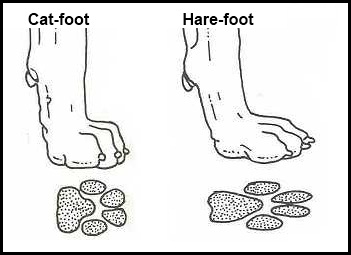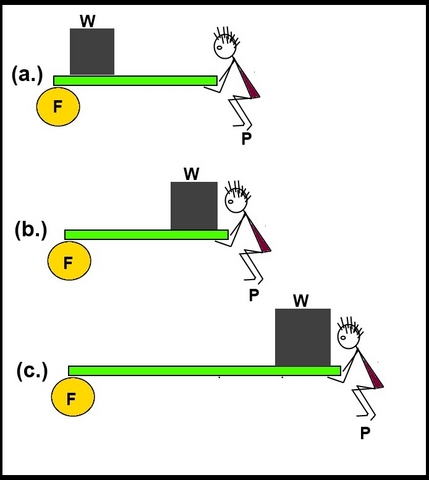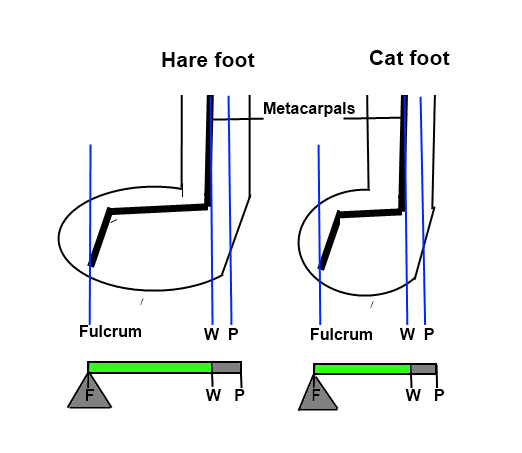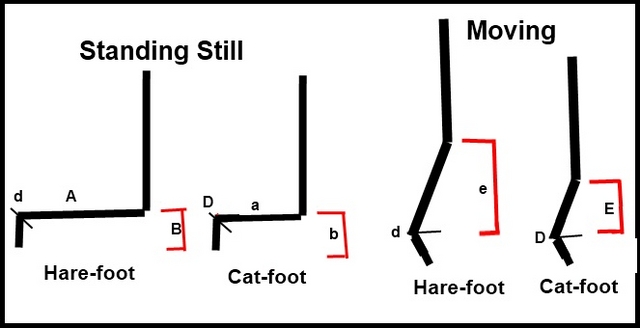Watercubs & Kivisilmän
working show-quality newfoundlands
and history
The paws in Newfoundlands
The Newfoundland breed standard asks for feet which are ”proportionate to the body in size, webbed, and cat foot in type”. Few things are as important to a dog as good, well-constructed feet and paws. Generally a bad foot will only get worse with age and wear, and as the feet have to support the entire weight of the dog while moving and standing still, proper foot and paw construction should be taken into account in all breeding programs. It should be remembered that structural faults (e.g. imbalance between front and rear or lack of angulation) often cause gait imbalance, which damages the paws and feet. The Newfoundland is a heavy dog, and logically we want big and wide paws to support the dog's weight. The standard mentions the paws should be ”proportionate to the body in size”. This means that the bigger the dog, the bigger the paws needed for support, and vice versa.
The dog's paws act as shock absorbers and provide traction. The condition of the pads and soles are very important for proper foot wear. The heel should be thick with a lot of cushioning. Remember that the thicker the pads, the better they are at shock absorption. Pads should be rough as the roughness provides traction and makes the pads more effective in sprinting and in tight turns. Think of your favorite pair of running shoes. The principle is the same. You want great grip so that you won't slip in turns or slippery surfaces and hurt yourself. You want great padding as you want to minimize the jolt you feel when your foot strikes the ground. You want well-balanced shoes so that you don't waste energy in keeping your foot leveled.
Cat feet vs. Hare feet
The ”cat-feet” mentioned in the Newfoundland breed standard refer to big, round and compact feet with short third digital bones (Figure 1). The toes are strong and arched, designed to give maximum support and a firm base, and provide a strong grip when walking on slippery surfaces. These type of feet require less energy per step (less energy to lift off the ground) allowing the dog to conserve maximum energy. Breeds which have been bred to have great endurance in the field such as the Newfoundland, Akita and Giant Schnauzer have round compact cat-feet. Feet with long third digital bones called hare-feet require greater energy to move than cat-feet, but they move faster. These type of feet are ideal for high bursts of initial speed and therefore dogs bred for speed such as the Greyhound and Pharaoh Hund have this type of paw construction. Note that a broken-down cat-foot should never be mistaken for a hare-foot!

Figure 1: The cat-foot and the hare-foot
The relative advantages of both types of feet depend solely on the breed's purpose ie. the function they were bred for. As cat-feet conserve energy (increase endurance) and are less likely to get injured while working in rough terrain, it is wiser for the majority of working dogs have this type of feet. Cat-feet provide great grip, which is a big advantage for Newfoundlands who have to be able to run on slippery, wet rocks and shores. It is more logical for a racing dog, or a dog which hunts with speed, to have hare-feet as any improvement in speed will give the dog an advantage.

Figure 2: The PWF leverage theory in action. Explaining the manipulation of the location of weights and lever lengths. Which one would you want to lift? In which one does the weight move the most?
To understand the science behind the two paw constructions we need to look at the mechanical theory of leverages. The goal of any lever is to achieve balance. Balance can be achieved by manipulating the weight, length of lever, power and points of contact. In the PWF leverage theory, the weight comes between the power and the fulcrum, just like it would in a wheelbarrow (Figure 2). The placement of the weight and length of lever affect the power needed to keep the lever in balance. The weight is heaviest near the P, and lightest near F. In simple terms, with the PWF system, one gets greater movement in weight with the same power if the weight is farthest away from the fulcrum, but this produces fatigue quicker than when the weight is close to the fulcrum.

Figure 3: The basic difference between the hare and cat foot in mechanical terms. The dog's weight (W) comes down through the metacarpals in the front paws and metatarsals in the back paws. Power (P) is applied via the tendons behind the metacarpals and metatarsals. The fulcrum (F) is the toe contact with the ground.
To get dogs with greater endurance, we need to minimize the amount of work per step. As we cannot affect the length of WP in a dog's foot (length of metacarpals/metatarsals to its tendons), we have to manipulate the paw's leverage action by lengthening or shortening FW (length of toe contact with the ground to metacarpals = length of paw) (Figure 3). By decreasing FW ( = shortening the paw length) the weight is closer to the fulcrum and thus easier to lift. Having a shorter paw will reduce the leverage action, which in turn will have an adverse effect on speed. However by having a smaller working arch, the dog conserves more energy and reduces the weight of the load and this reduces fatigue. This means that with the same power, we get more steps in the cat-foot than the hare-foot (Figure 4).

Figure 4: Diagrams explaining the leverage action and working arch differences between the cat and hare foot.
By having a longer third digit (=hare foot), the paw is longer and this increases the paw's leverage action. If you look at the figure 4, you can see that with the same stretching motion, the hare-foot's leverage action is greater than that of a cat-foot (e is bigger than E) even though at resting the height of the joint is the same ( IBI = IbI). By increasing the leverage action, speed is increased as the hare foot is able to propel the paw further than the cat-foot. However this requires more energy per step (requires more muscular action) and hastens fatigue, as the muscles have to pull the leg further. The principle is the same as in the hock between the Achilles tendon and hock joint.
Webs, declaws and size differences
It is believed that in the late 1500s and early 1600s, when the shipping route between England and Newfoundland opened, the original black Newfoundland started to mix with European breeds such as the Portuguese Water Dog, an earlier version of the modern Great Pyrenees, great hunting dogs, sheep dogs and spaniels. Kuvacs is also believed to have mixed with the original type to create our modern Newfoundland. Around this time, the breed started to separate into two: the lesser St. John Dog (giving rise to the Labrador and Flat Coated Retrievers) and the Greater St. John's dog (separating into the Newfoundland and the Landseer). While the Portuguese Water Dog is clearly much smaller and thin boned than the Newfoundland, this important mixing gave the Newfoundland its waterproof coat and webbed feet. Ideally a waterworking dog should always have big, wide feet with excessive skin between the toes, creating the important webbing. The Newfoundland breed standard recognizes this and mentions that paws should be ”webbed”. When the Newfoundland swims, it opens its paws to get maximum surface for pushing against the water and therefore maximizing swimming power with minimum effort (minimum energy used).
The Newfoundland is structurally very similar to the Great Pyrenees. However there is debate as to whether the Pyrenees truly could have mixed with the early Newfoundland. The argument is that as declaws are highly heritable and can be found on the back legs of all Great Pyrenees, the fact that Newfoundlands very, very rarely have them on their hind legs would make it improbable that these two breeds mixed within the last few hundred years. The dewclaw is the termination of the fifth metacarpal in the front leg, and the fifth metatarsal in the back leg.
I believe that dismissing the Great Pyrenees solely on the declaw argument is a bit short-sighted. The fact that the Newfoundland breed standard mentions that ”dewclaws may be removed” from the front paws and ”should be removed” from the back, would indicate that at some point at least a portion of Newfoundlands had declaws in their back legs. This means strong selective breeding may have gotten rid of the characteristic, even though it IS highly heritable. It is often believed that dogs who work on rough and frozen terrain should have them removed in case they become torn or injured due to sharp edges. I however believe this to be unnecessary in the modern day Newfoundland. As the front feet have to carry more weight than the back legs, most working dogs have larger front paws and feet than back, although not many standards mention this. If the back paws were as large as the front paws, this would increase speed as it would increase the paw's leverage action, but this would also have a great impact on endurance. If you look at modern breeds, you can see the size difference of the front and back paws in big working dogs more clearly than in dogs bred for speed such as the Greyhound and Afghan Hound. The back paws need to be compact and strong as they provide the pulling power, but we cannot reduce the size of the back paws too much, or make them too compact, as they have to support a lot of weight, especially in a big dog such as the Newfoundland.
Final words:
The construction of the paw or the hock alone does not make a dog significantly faster or have more endurance. The Newfoundland is a sum of its parts. In our goal to breed working Newfoundlands, we need to look at everything that has an effect on the dogs' performance. We want to find the parts of the construction, which we can manipulate to increase endurance to its maximum. If we can get a few extra hundred meters of swimming distance by lowering the hock joint closer to the ground or by making sure the paw is as compact as possible, logically we should try and achieve this with our breeding programs. After all, we are breeding Newfoundlands for what they originally were designed for - heavy work both on land and in water.
Reading List:
McDowell, Lyon (1973) The Dog in Action (For All Breeds), Howell Bookhouse Inc, NY, USA
Pemberton, Ronald (1998) A Study of the Newfoundland, Howell, Michigan, USA
Gilbert, E. M. Jr & Brown, T. R (2001) K9 Structure & Terminology, Dogfolk Enterprises, Oregon, USA
Bendure, J. C (1994) The Newfoundland: Companion Dog, Water Dog, Howell Bookhouse, NY, USA
Aho, R. (2006) Tavoitteena terverakenteinen koira, Kalevaprint Oy, Finland
Booth Cherin, M. (1955) The New and Complete Newfoundland, Howell Bookhouse, NY, USA
Bruno, Emmy (1997) The Pure Bred Series: The Newfoundland, Doral Publishing, Phoenix, USA
(c) Salmelin